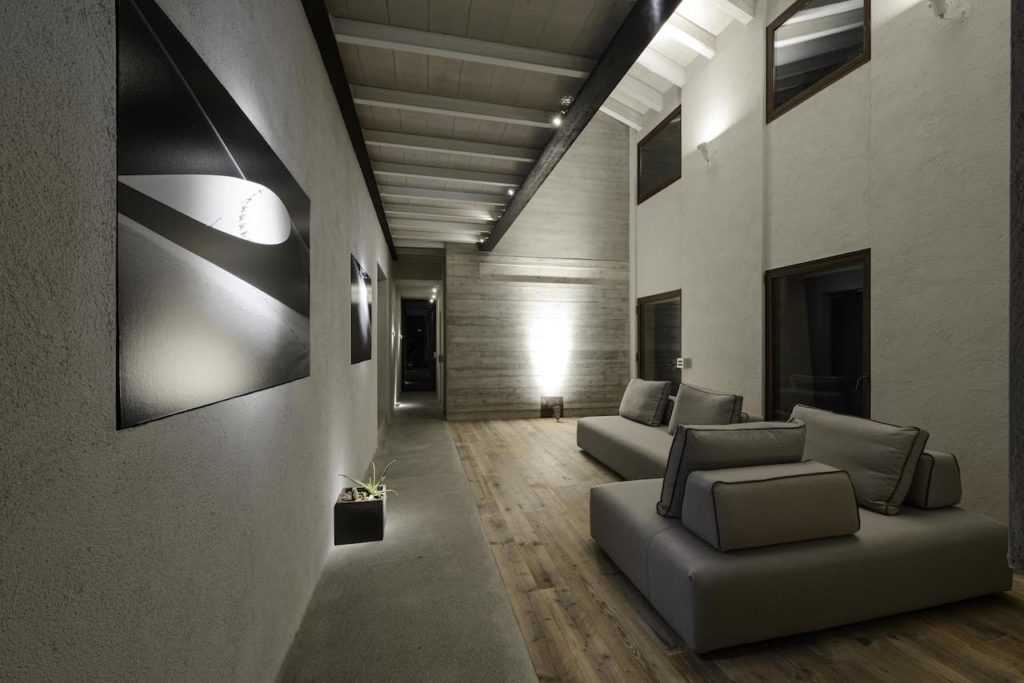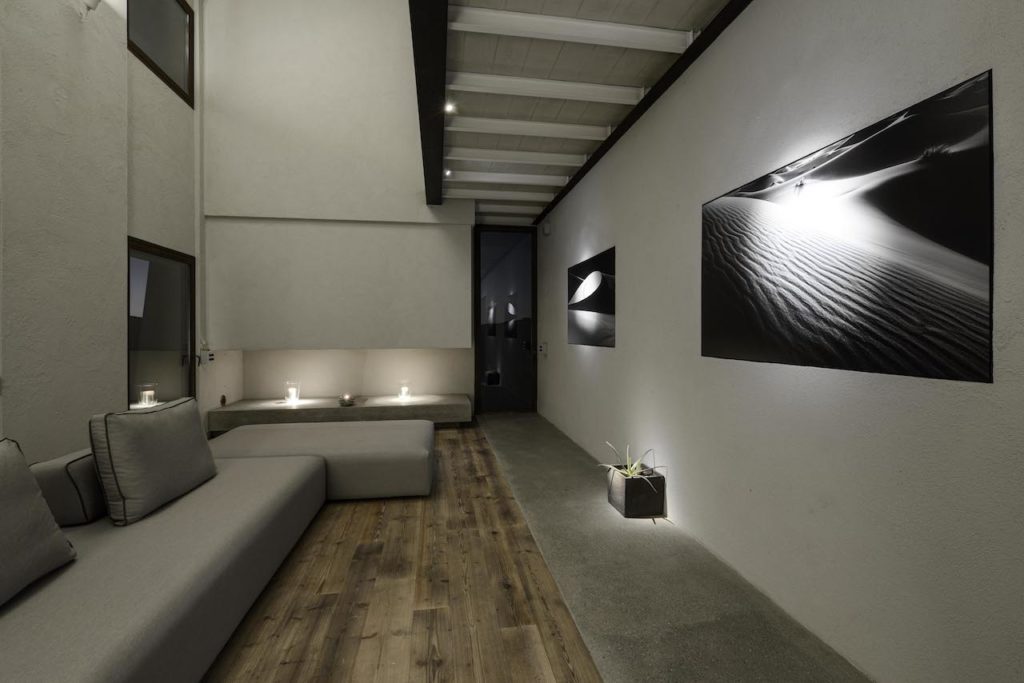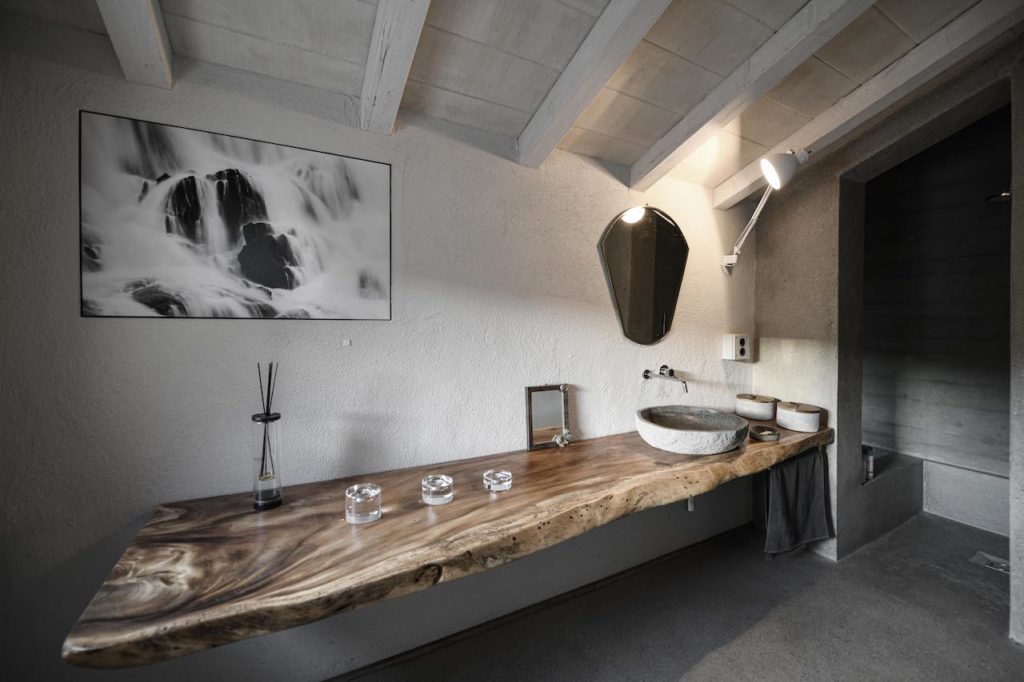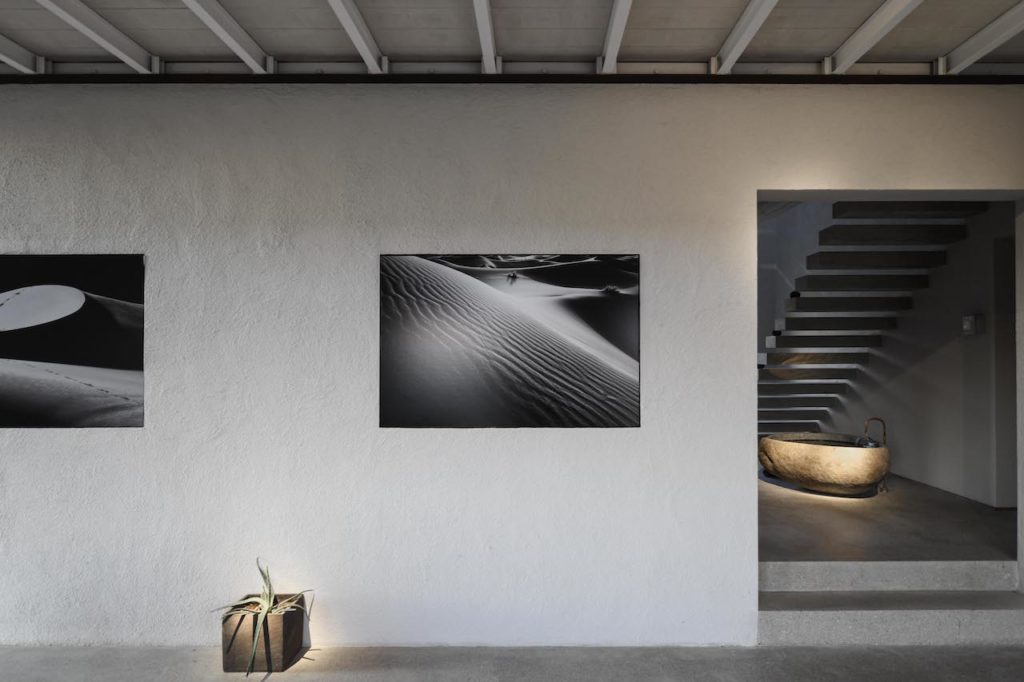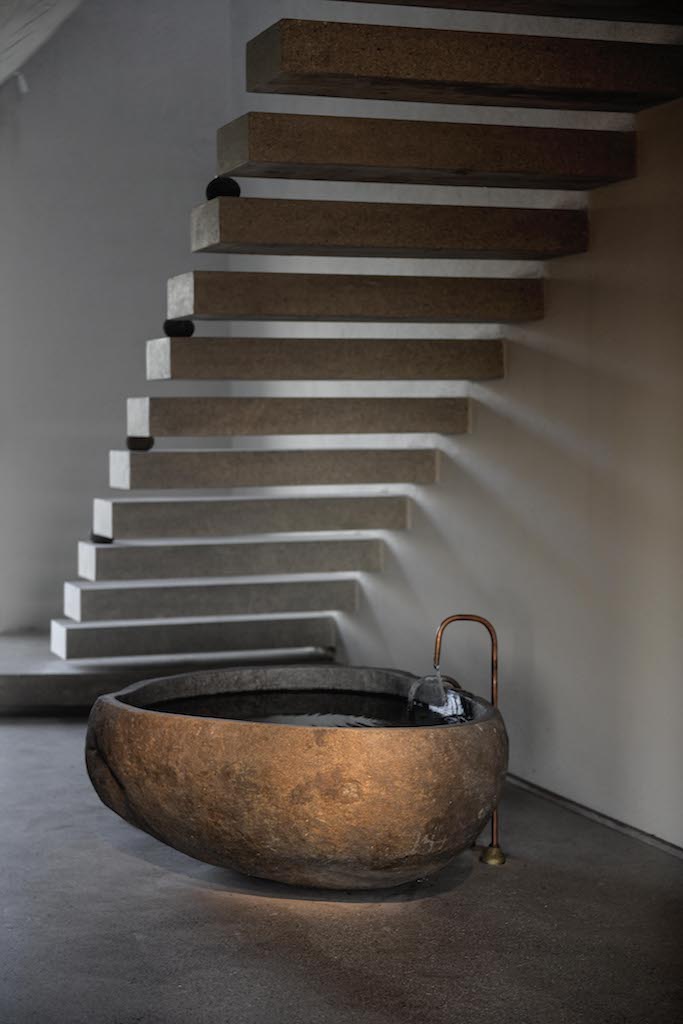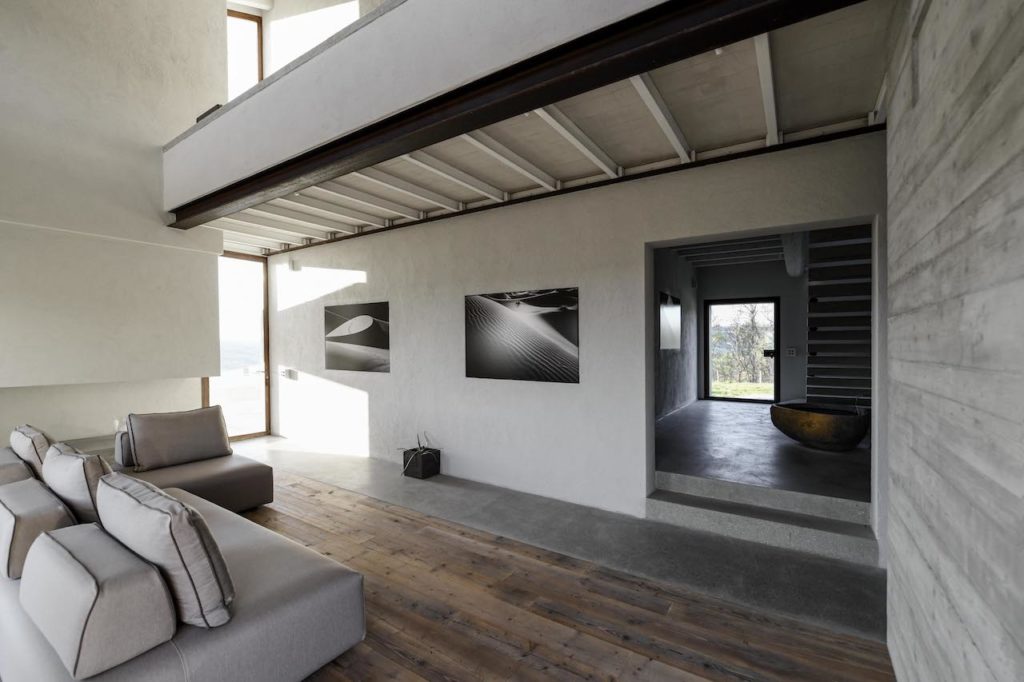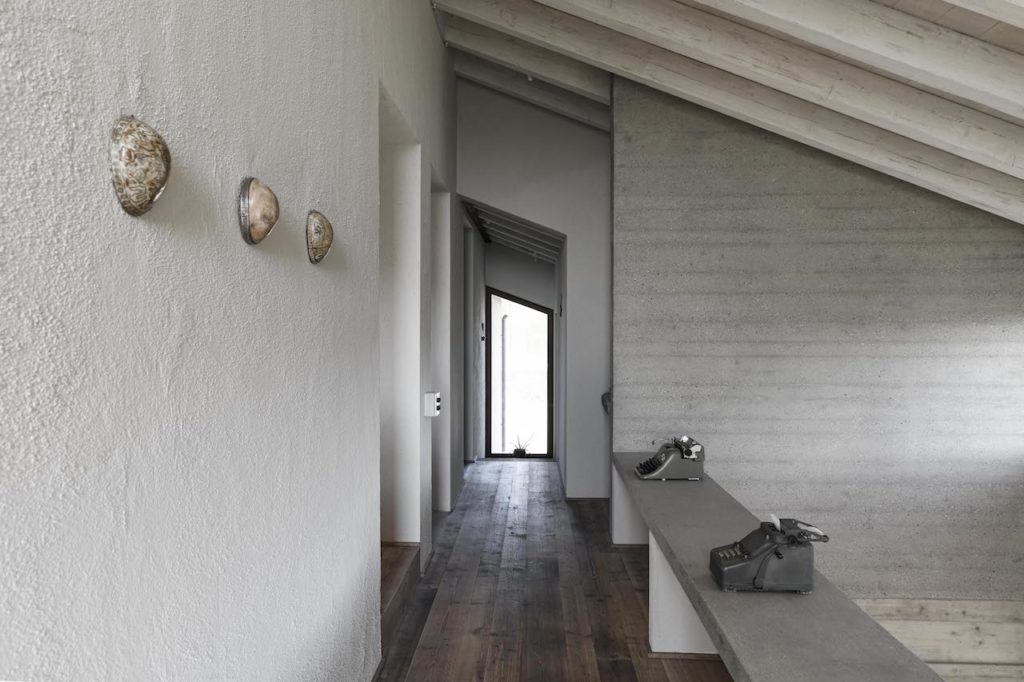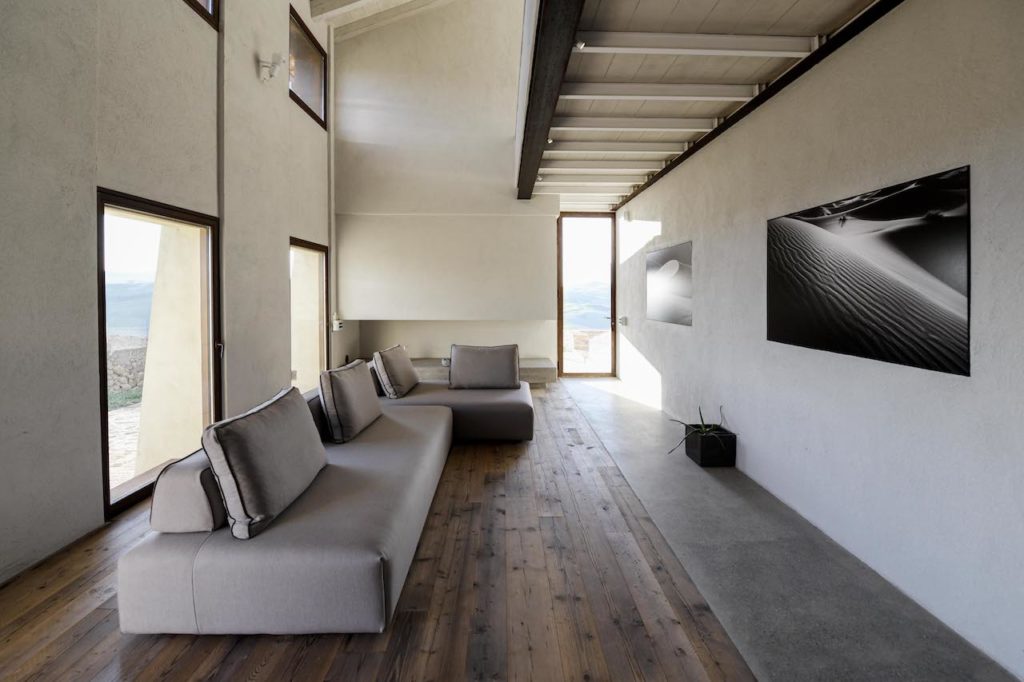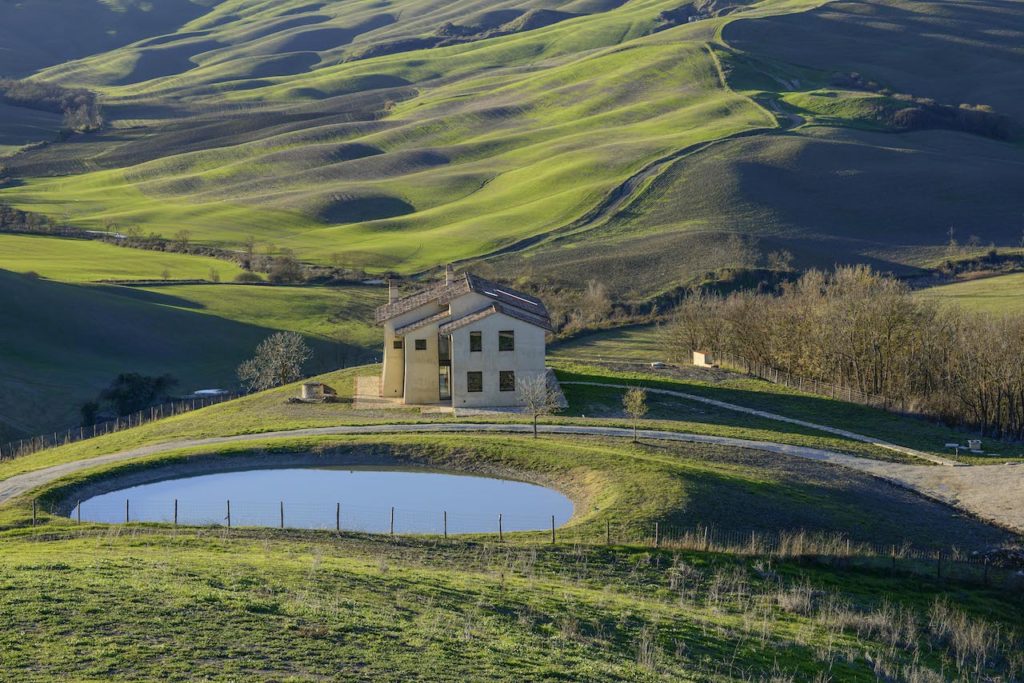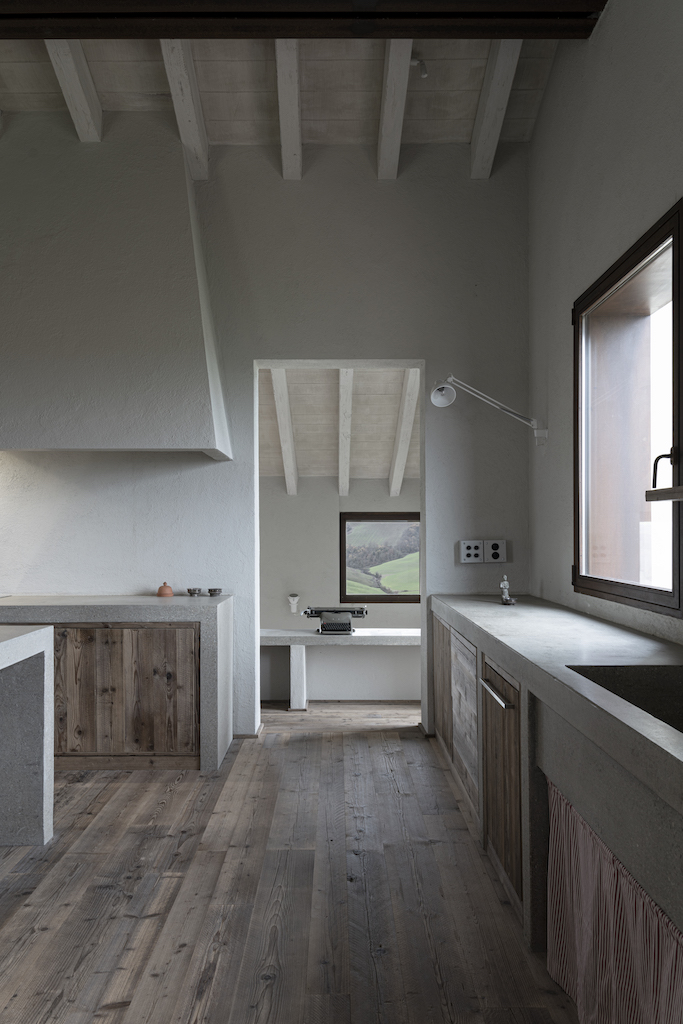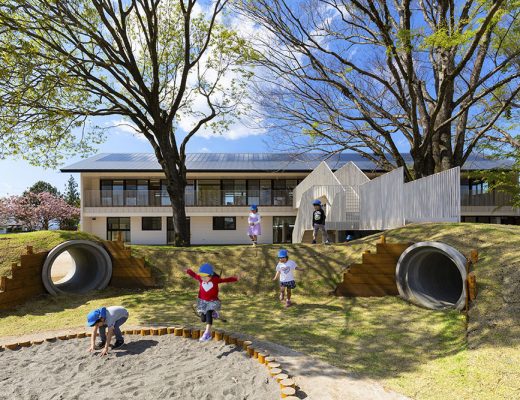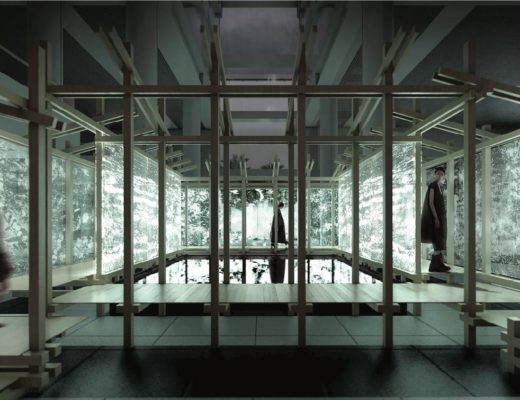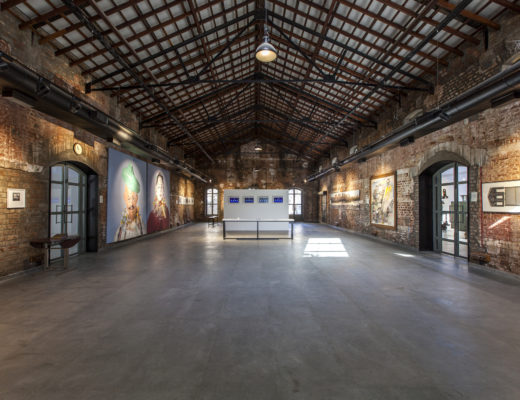Italy- and UAE-based multidisciplinary design studio SUPERFUTUREDESIGN* and parent practice ASZarchitetti recently collaborated to rejuvenate a farmhouse in southern Tuscany, and update it in a contemporary manner with all the mod-cons, yet retaining its heritage, and the context of its surroundings.
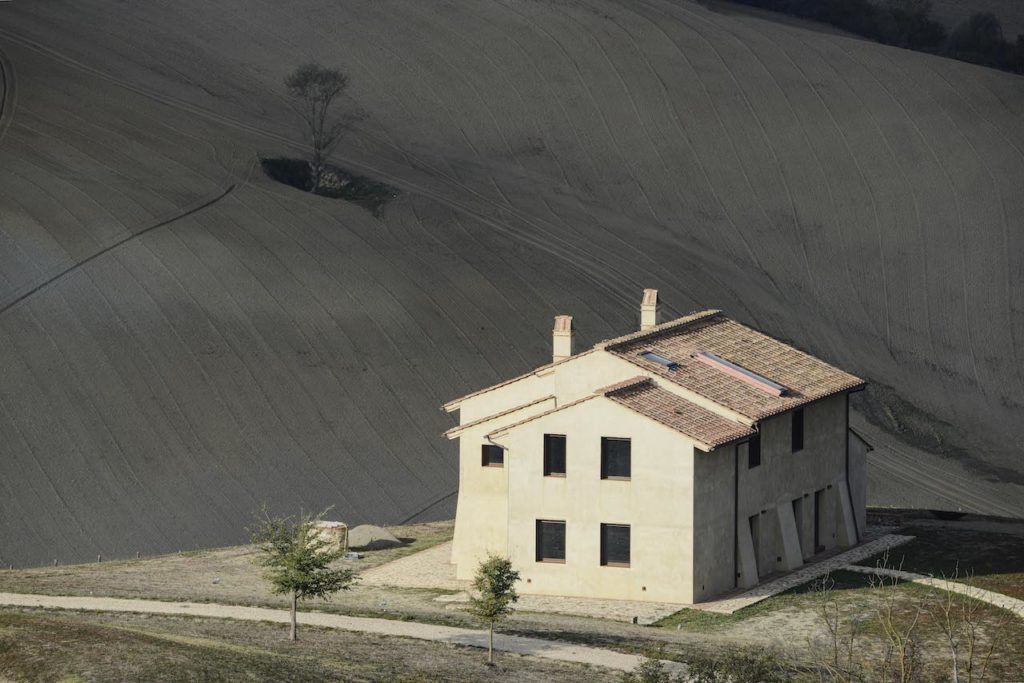
“Given the proposal, we approached the project with caution since we needed to make sure that we created a new concept without compromising the integrity of the previous structure,” explains the firm’s founder and principal architect, Andrea Sensoli, known for his minimalist design aesthetic that is enhanced with the use of advanced technological features.
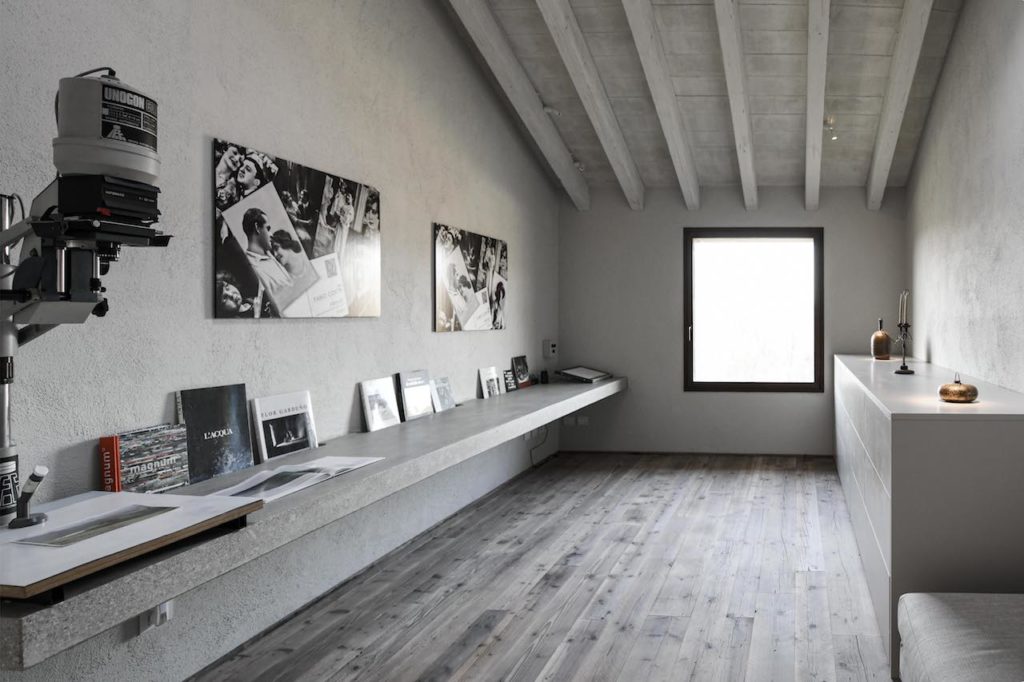
Located in the Crete Senesi area in Tuscany, south of Siena, the old heritage farmhouse is surrounded by a magnificent landscape of lush rolling hills and features a natural pond – a depiction of the fascinating ecosystem in itself.
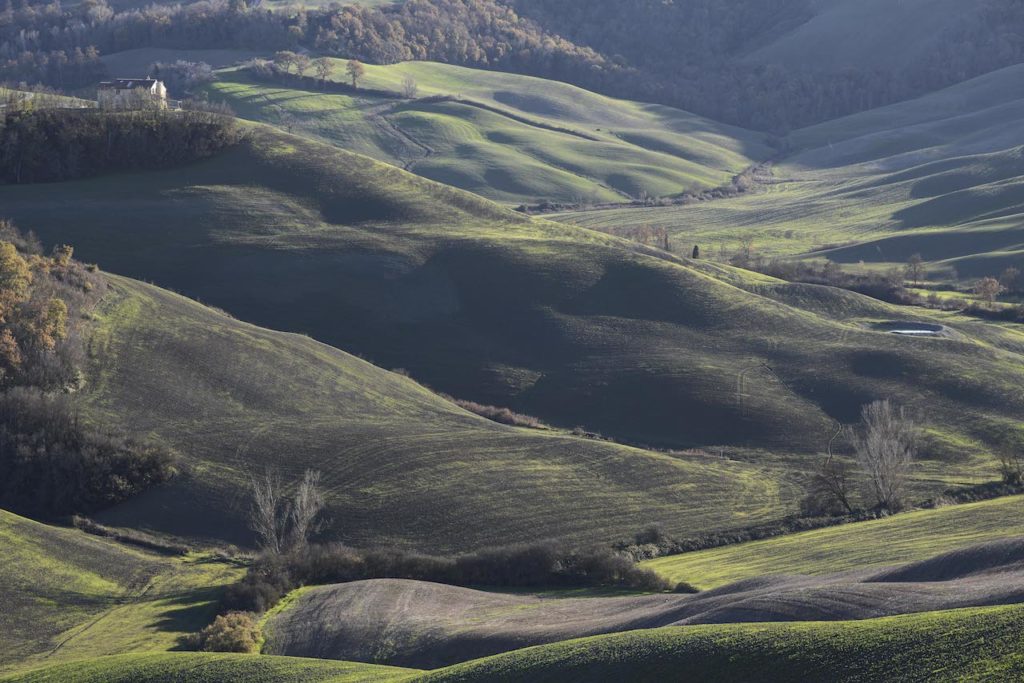
The project called Villa Asciano comprised a complete remodelling and rebuilding job, but with important conditions that needed to be met. Most significantly, the entire structure had to be rebuilt while utilising old materials at the same time.
“It’s easy to wonder what made our client, in this case, think that an old farmhouse, reclaimed by nature, would be a perfect home. More than just the historical structure, the captivating landscape surrounding it made the prospect of living there a serene experience.”
Andrea Sensoli, principal architect, SUPERFUTUREDESIGN* and ASZarchitetti

“The main theme behind the project was to adopt a modern methodology in rebuilding the house,” shares Mr Sensoli. “At the same time, we needed to respect the traditional and rural architecture of the historically important area.”

Instead of approaching the sensitive site with a mimicking outlook, the design team drew clear inspiration from the original building. At the same time, the team realised that the contemporary manifestation of the design would need to be explicitly expressed as well. It was envisioned that the result would be an eclectic mix of unique aspects on opposing sides of the spectrum – the old and new, the predictable and the unknown, and most obvious, conservative nature as well as a futuristic one.

The project’s client, a photographer by profession, felt that the home would be an epicentre of a natural expanse that enticed the senses with a palette of sights, sounds, and smells, all of which would help make memories and emotions. The house features a muted colour palette and natural materials so as not to distract from the panoramic landscape, as well as balance the solidity of the structure with its unostentatious presence.
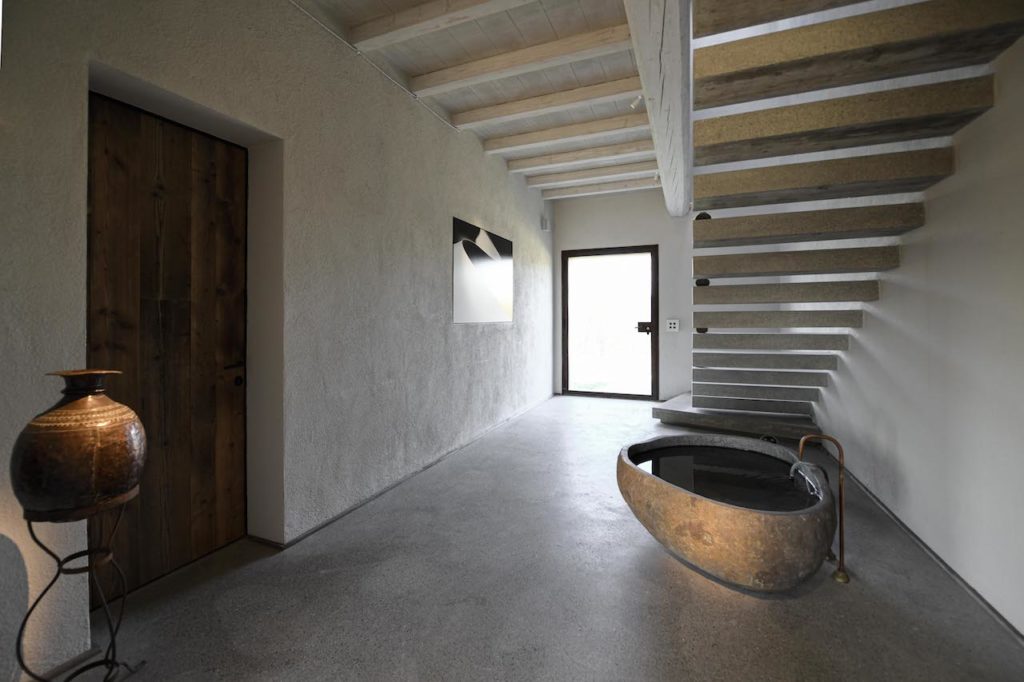
“It’s easy to wonder what made our client, in this case, think that an old farmhouse, reclaimed by nature, would be a perfect home. More than just the historical structure, the captivating landscape surrounding it made the prospect of living there a serene experience,” notes Mr Sensoli. “In an era when most people would prefer living in locations at the pulse of urban development, such a divergent perspective was pivotal for how we saw our surroundings. It also helped us form a distinct framework for designing and rebuilding the farmhouse.”
Some of the most eye-catching characteristics of the project include the sustainable method of reusing existing materials in a modern style. In addition, sleek metal cornices at the openings and frameless windows paved the way for a modern update.

The design team developed a customised design process to meet the needs of the project. Construction was executed as per the traditional design – the previous outline was utilised to establish a new structure. This is where modern technology helped complement the project as the design team used next-generation technology to maintain better engineering standards. The resulting structure is far more robust, as well as adhering to the latest anti-seismic codes, enhanced thermal performance, and energy efficiency.

“As one of our most challenging projects to date – it tested our ability to come up with sustainable solutions, interpret postmodern motifs, pay tribute to old traditions, and meet higher design standards at the same time,” shares Mr Sensoli.
Photos courtesy: SUPERFUTUREDESIGN* AND ASZARCHITETTI
See the full image gallery here:
You might also like:
Rural house in Vietnam by TAA Design integrates multi-function house with rooftop garden



